#Chinavia
Text


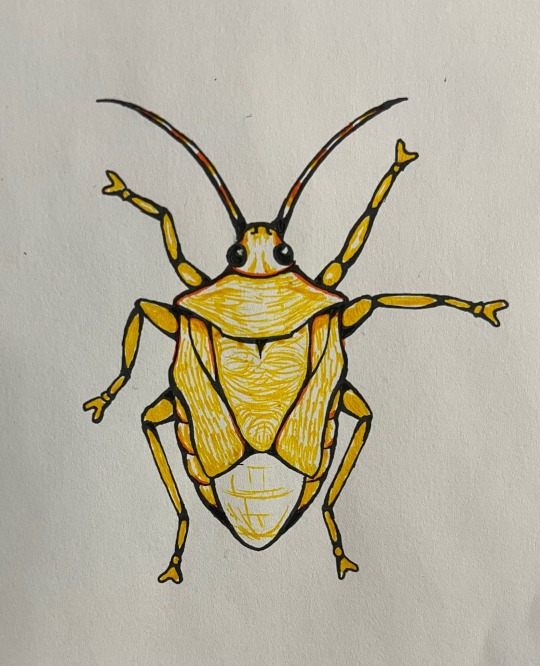

A quick doodle with pen and ink. Hoping to make a gift of the finished product.
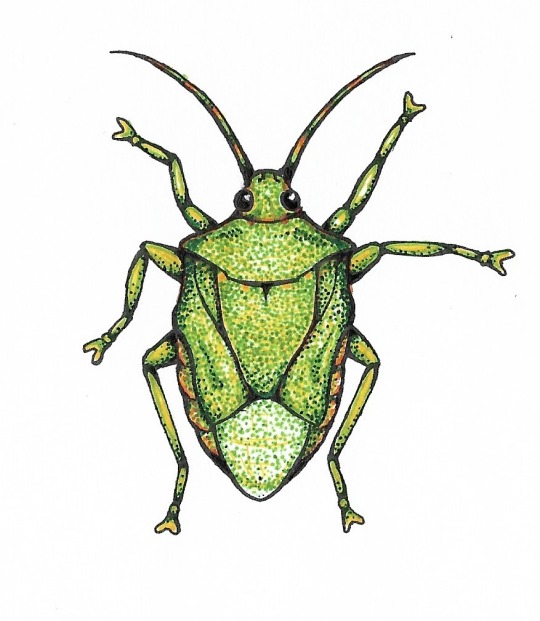
282 notes
·
View notes
Text

green stink bug, Chinavia hilaris
3 notes
·
View notes
Text
just got shown up on the bug knowledge app (TM) about my bug knowledge. may never recover from the very clearly and firmly laid out reasoning why someone disagrees with my specific stink bug species identification from someone's single blurry photo. avenge me, etc.
#i thought it was Nezara viridula and even laid out why it wasn't Chinavia hilaris (very difficult - they look identical)#and some smarmy bug knowledge guy is like 'well actually it's Cuspicona simplex' and says like seven words i'd have to look up in a very-#specific encyclopaedia about it#like yr right but Okay 🙄🙃#(he wasn't smarmy i'm just wounded by my overconfidence)#me#ramble
8 notes
·
View notes
Text
Why We Need to Care About Insects
Originally posted on my website at https://rebeccalexa.com/why-we-need-to-care-about-insects/
Some months back a study was released that demonstrates just how damaging climate change is to insects, particularly those in tropical areas. Warming temperatures cause insects to die from overheating and dehydration, kills off their food sources, and lowers their fertility rates to dangerous levels. Moreover, changes in climate affect insect phenology, the timing of when they hatch, migrate, breed, and so forth.
And because insects are so small, they’re often disproportionately affected by many of these problems. As ectotherms, they rely on the air around them to regulate their body temperatures; their small mass means they lose heat faster than larger animals, and can be overloaded with heat much more quickly. Tropical insects are especially at risk from major fluctuations in temperature because they are adapted to a relatively narrow temperature range.

Gray spruce looper moth (Caripeta divisata)
But the problem goes far beyond the tropics, and we are in the middle of an insect apocalypse. This problem often flies under the radar of those who are not already aware of invertebrate conservation. While a few insects, such as monarch butterflies (Danaus plexippus) and domestic honey bees (Apis mellifera), find themselves in the press on a regular basis, most species don’t have large fan clubs. Some of my favorite insects include the white-tipped ctenucha moth (Ctenucha rubroscapus), the velvet snail-eating beetle (Scaphinotus velutinus), and the black-tailed bumblebee (Bombus melanopygus), none of which are insects you’re likely to find making the headlines.
To be fair, there are a lot of insect species out there, so it would be hard to feature every single one individually. But we already face the problem that many people simply just don’t see why we need to worry about fewer bugs around. Last year I wrote an article about how search engines tend to produce exterminator sites at the top of results for various insects, and while some of that is no doubt due to advertising-oriented algorithms, they do reflect a widespread demand for extermination services that isn’t matched by more positive attention to these little animals.
Much has been said among entomologists, ecologists, and other professionals about why we need to be concerned about the drastic drop in the numbers of many insect species, and I’ve written about it as well. I could reiterate what would happen if we lost our pollinators (and also how to save them!) or the crucial role insect detritivores play in reducing diseases and keeping the food web cycling along. And I am still a champion for mosquitoes and other unpopular insects.
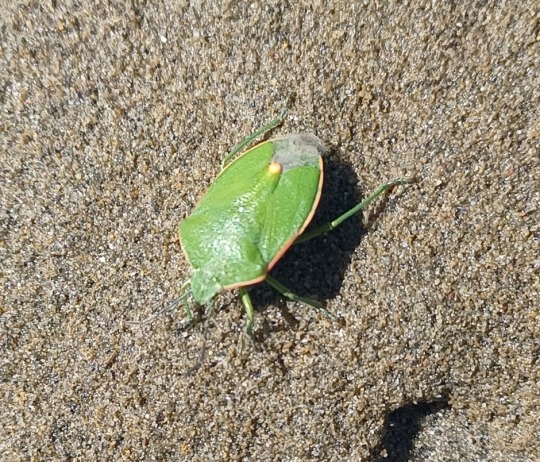
Green stink bug (Chinavia hilaris)
But these things always bear repeating. It may be that nine out of every ten organisms on this planet is an insect. Insects play an incredible number of ecological roles, from ecosystem engineers to pollinators to food sources and much more. Without them, ecosystems around the planet would collapse entirely.
I could certainly take the self-interested route and emphasize that fully one-third of our food relies on insects and other pollinators. I might also point out that insect detritivores help nourish the soil needed for everything from food crops to timber. While terrestrial insects and other arthropods only make up about a fifth of the amount of global biomass as their marine counterparts, they still represent a natural sink that holds about 200 million tons of carbon at any given time.
But our anthropocentric worldview rarely considers the intrinsic value of insects simply for existing. We’re constantly weighing and measuring their worth based on our biases and values. We divide them into “good” or “bad” insects: good insects are those that do things we like, like pollination or looking pretty, while bad insects are the ones that chew on our homes and plants or which bite or sting us when threatened or seeking food. For a lot of people, any insect beyond maybe a butterfly is a reason to say “Ewww, gross!” I’ve even seen this widespread among self-professed nature lovers, whether they have a true entemophobia or not, though there may be an evolutionary reason for this seemingly disproportionate reaction.
So consider this yet another attempt to change opinions about insects. I can’t cure entemophobia, but I can at least get people thinking more critically about personal and societal attitudes toward insects. I hope to get people to realize that widespread use of pesticides and other garden/agricultural chemicals–which has increased fifty-fold in twenty-five years–is driving the loss of so many insects. I’ve mentioned before that habitat loss is the single biggest cause of species endangerment and extinction, and that goes for insects, too. And, of course, the study mentioned at the start of this article is just one highlighting the increasing impact climate change has on insects worldwide.
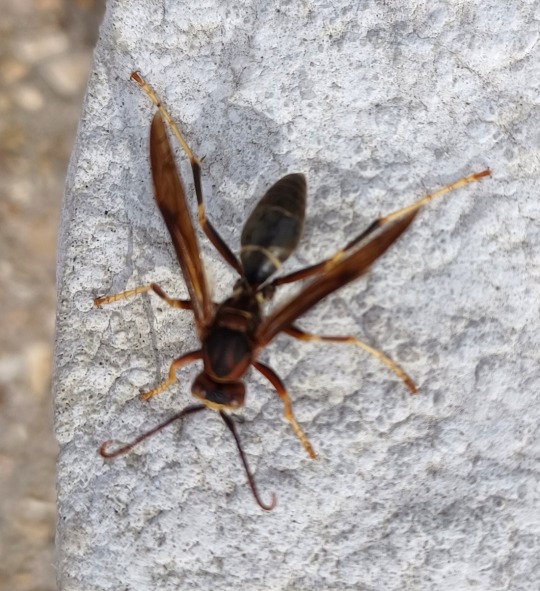
Metric Paper Wasp (Polistes metricus)
Let me wrap this up on a bright note: word is getting out. There is a lot more awareness than there was twenty years ago, and there’s more nuance than we had in the early “save the (domesticated European honey) bees” campaigns. More people are ditching pesticides and other garden chemicals unless absolutely needed, and regenerative agricultural practices that use fewer chemicals overall are gaining ground. And while numerous organizations are increasing awareness of insect conservation, the Xerces Society for Invertebrate Conservation–the oldest organization dedicated solely to invertebrates–is still going strong.
And you can help spread the word, too. Share this article with others, and some of the resources and organizations linked throughout. Consider your own relationship to the native insects in the world around you, and whether you might make their lives a little easier. And remember that sometimes it is the smallest of things that have the greatest importance in such a massive system as an entire living planet.
Did you enjoy this post? Consider taking one of my online foraging and natural history classes or hiring me for a guided nature tour, checking out my other articles, or picking up a paperback or ebook I’ve written! You can even buy me a coffee here!
#insects#CW insects#moth#beetle#wasp#bugs#invertebrates#insect apocalypse#climate change#environment#conservation#endangered species#extinction#sixth great extinction#wildlife#nature#animals#ecology#science#scicomm
152 notes
·
View notes
Note
Found this tiny friend stuck in a drain at work. I rescued them and freed them outside but now I'm curious if you know what this friend is! Found in Northern Oklahoma if that helps

or something in the same genus, but looks like this one to me
28 notes
·
View notes
Text
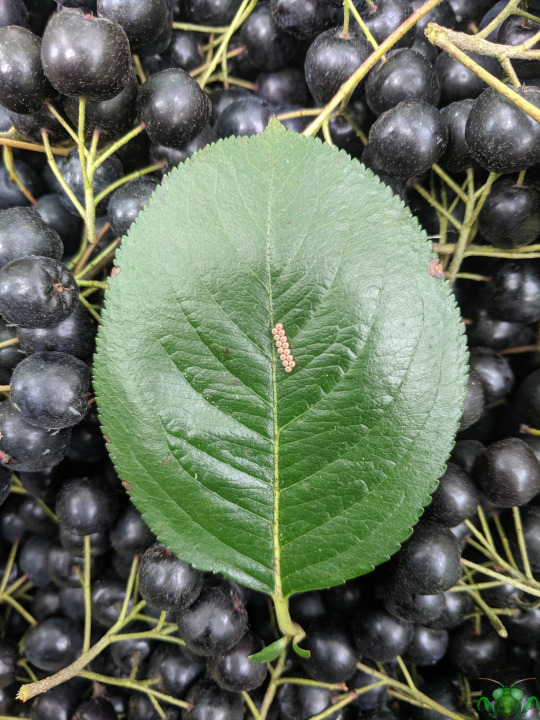
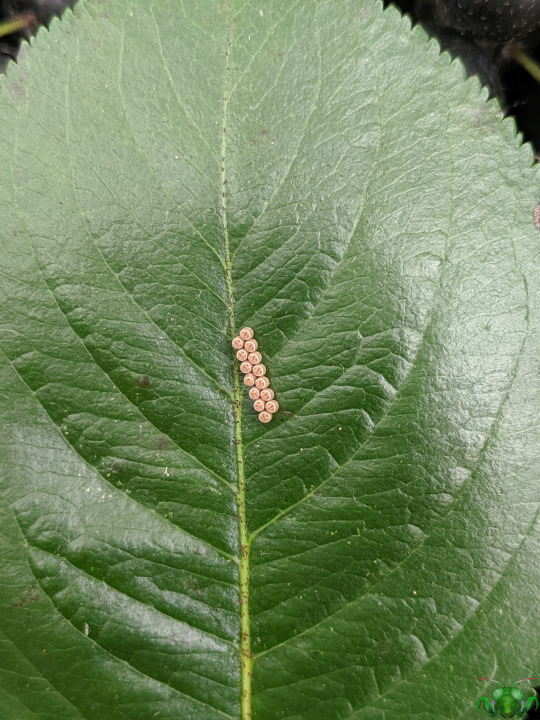
Stink Bug Eggs - Family Pentatomidae
This is a first, as it's not very often that I find insect eggs. Lucky for me, my dear friend Sarali found this cluster during her yearlong travel across Asia. I'm not aware on the context which these berries where found, but for an idea of the sense of scale in these pictures: the black (or possibly purple) chokeberries on display are likely between 7-12mm wide. With that knowledge in mind, an adult insect could easily fit a lot of egg clusters on just one of those small fruits! However, unless the insect in question is a specialist on fruit infiltration, a plant's leaves are the safer option, especially if the fruits are likely to be eaten. If the arrangement of this egg cluster is any indication, these eggs belong to a Stink Bug; they are quite fond of placing their eggs in hexagonal clusters. An adult Stinkbug is capable of laying several hundred eggs throughout her lifetime, so this is just a sample of the possibilities. The count does seem a bit low however (only 14), but nature is large, intricate system and there could be many reasons for such a small cluster (e.g., specie dependent, egg-laying was disturbed, smaller clusters laid across more plants/leaves, other eggs were eaten). Currently, I cannot determine which Stinkbug specie these eggs belong to or the age of these eggs.
Resources keep referring me to the Brown Marmorated Stink Bug, but the eggs don't match at all. It might be because of that particular insect can be found on chokeberry and is a common find, especially in its native range. It's likely something a bit more exotic that may be more familiar in South Korea compared to my limited understanding of that environment from Canada. Although at a glance they seem closer in appearance to the mature eggs of the Green Stinkbugs (Chinavia spp.). Perhaps a distant relative! Nevertheless, under normal conditions when these eggs hatch, the young Stinkbug nymphs move out and find a suitable location along a plant (either this one or another) to pierce it and absorb nutrients. Those that are lucky will molt several times and reach shield-shaped adulthood, and can then take flight to a new plant. In this case however, if these eggs hatched in proximity to the fruit, the nymphs could fall into the berries and become someone's breakfast! There's always a small chance, especially when it comes to ripened fruit, so it may be best to thoroughly wash food obtained from an outdoor market. It's the same over here as I think of the neighborhood grocery stores and the Yellowjackets enjoying bites of peach and packaged berries. Washing is best; these insects are not for eating.
Pictures were taken on July 31, 2019 in Korea with a Google Pixel.
#jonny's insect catalogue#insect#stinkbug#stinkbug eggs#insect eggs#hemiptera#heteroptera#pentatomidae eggs#south korea#korea#july2019#2019#nature#entomology#unidentified#asia insect#invertebrates
2 notes
·
View notes
Text
saw a green shield bug (chinavia halaris) today yayy
4 notes
·
View notes
Text

Green Stink Bug (nymph), Chinavia hilaris
9 notes
·
View notes
Text

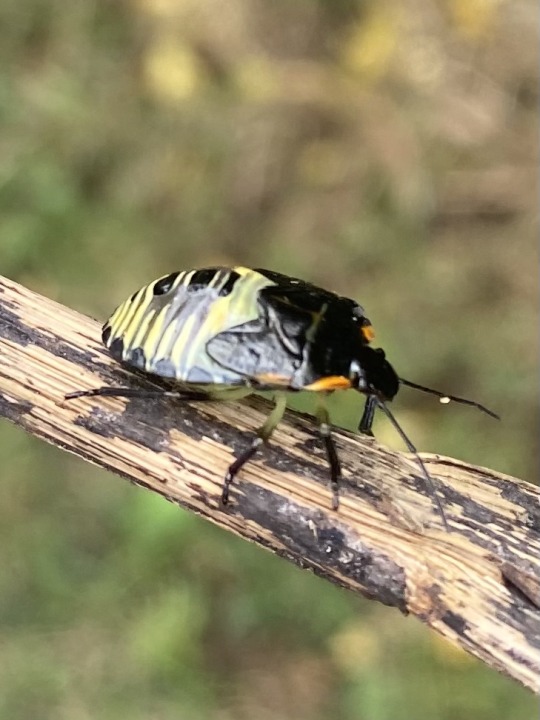
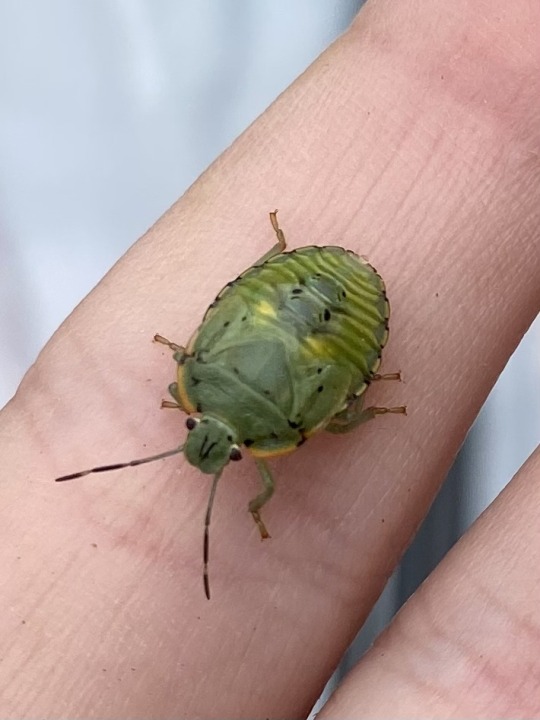
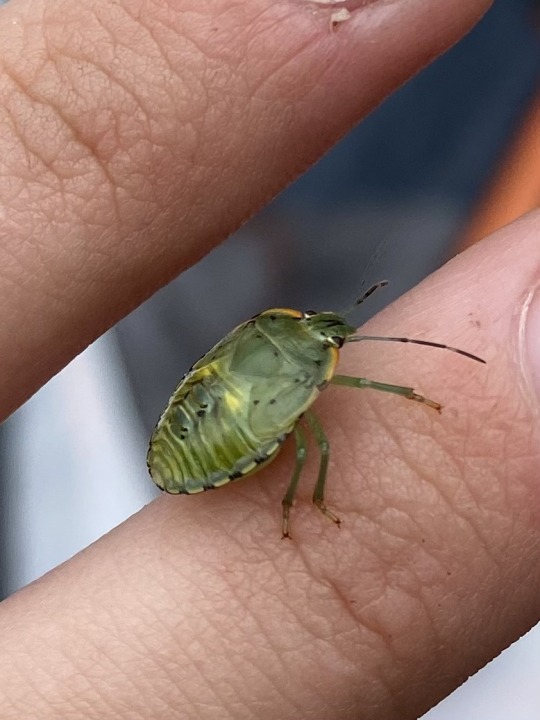
green stinkbug instars
chinavia hilaris
2 notes
·
View notes
Text
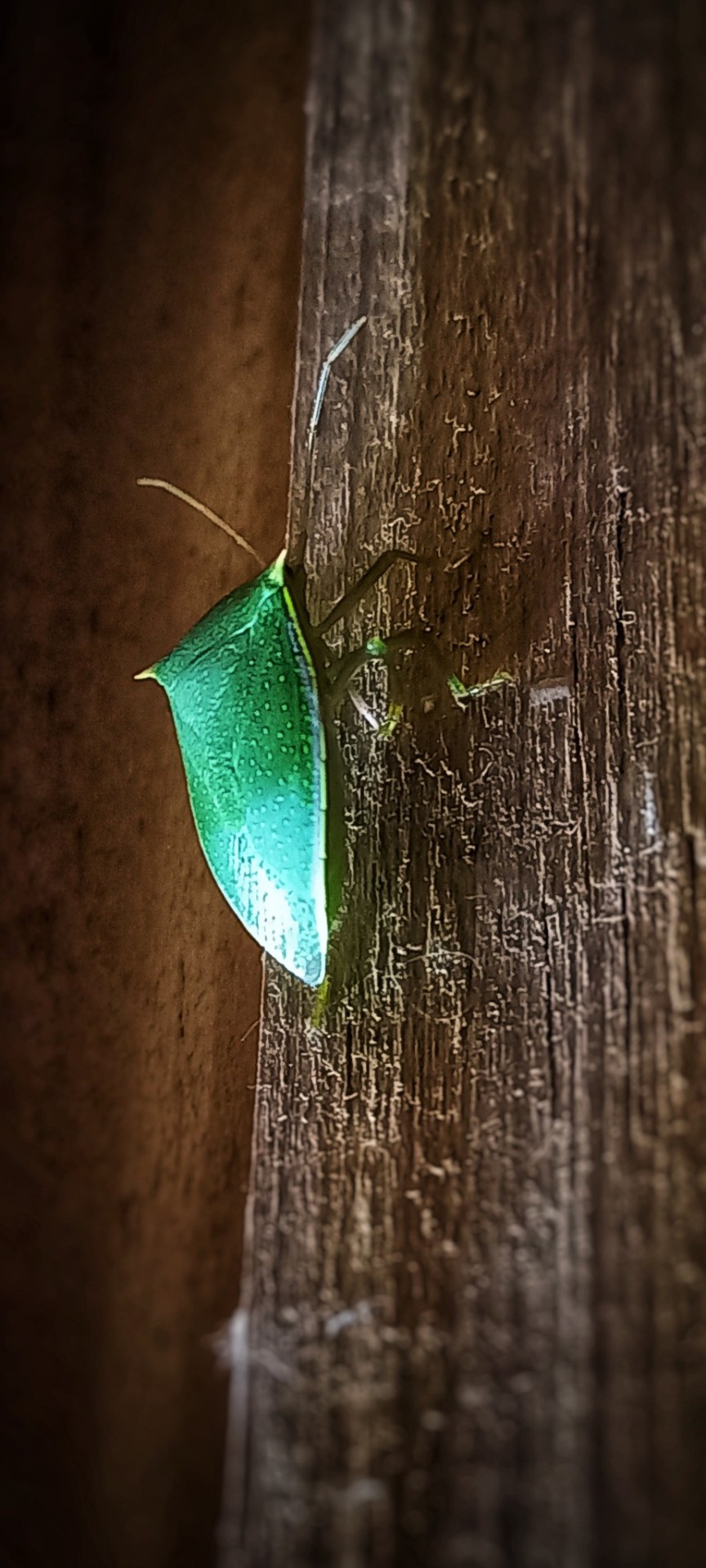
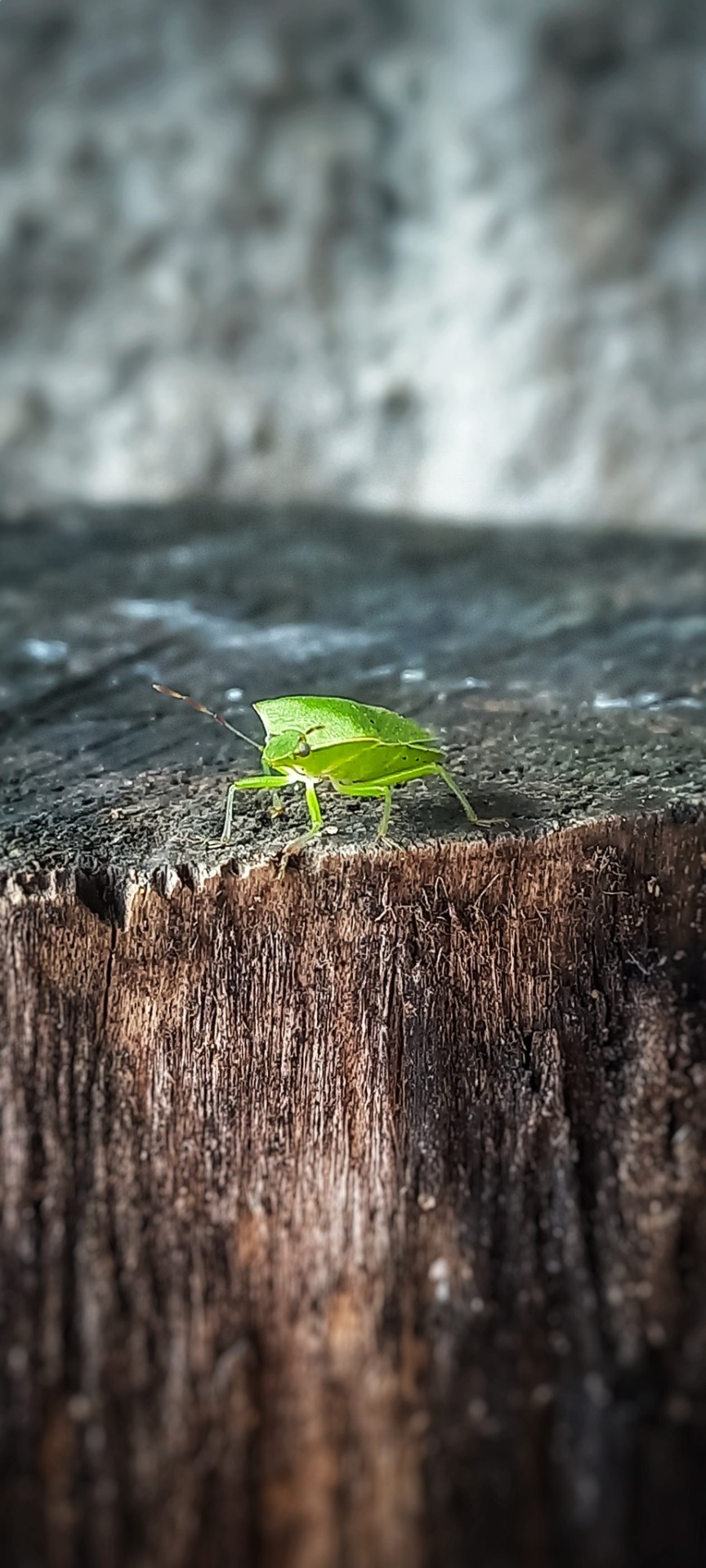


Chinavia hilaris /Chlorochroa
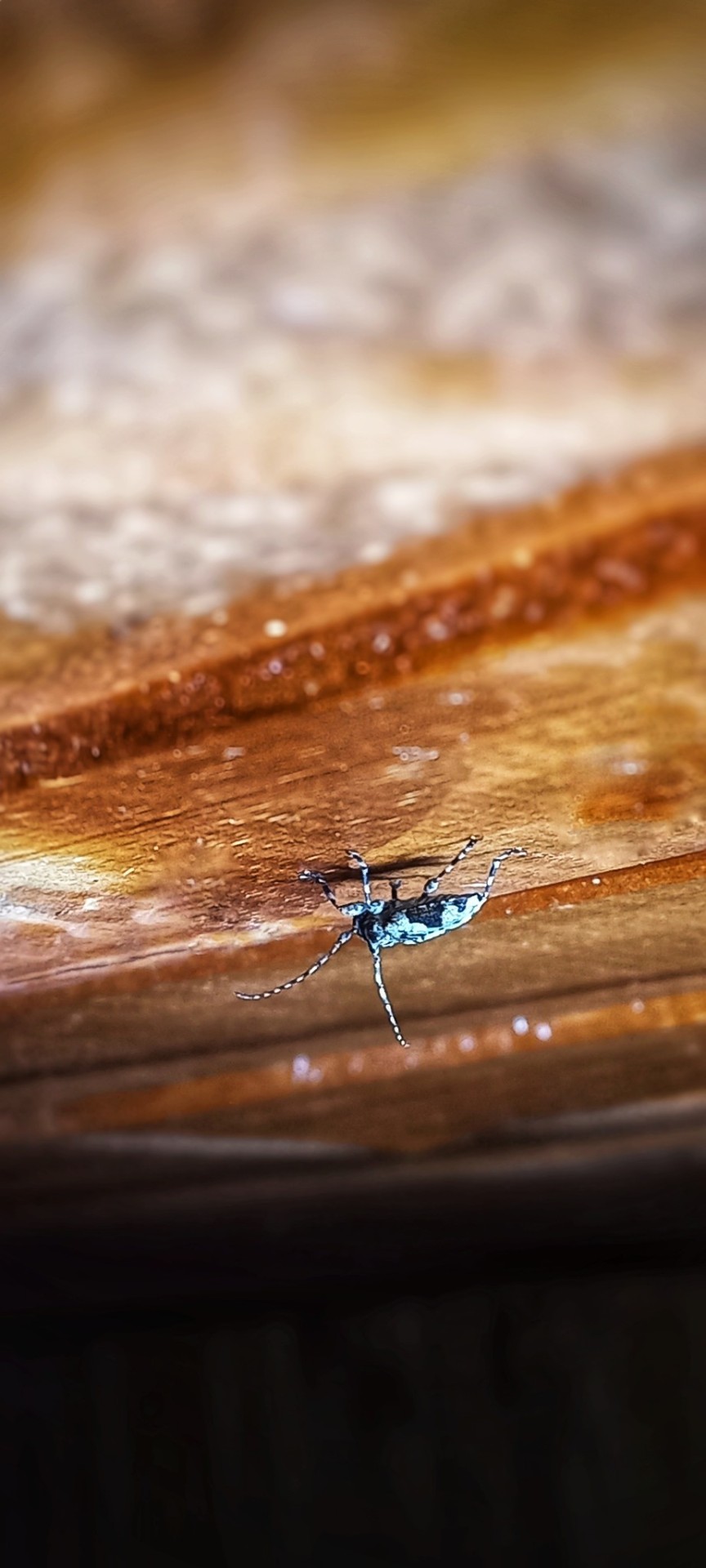
Mesosa

Percevejo largus
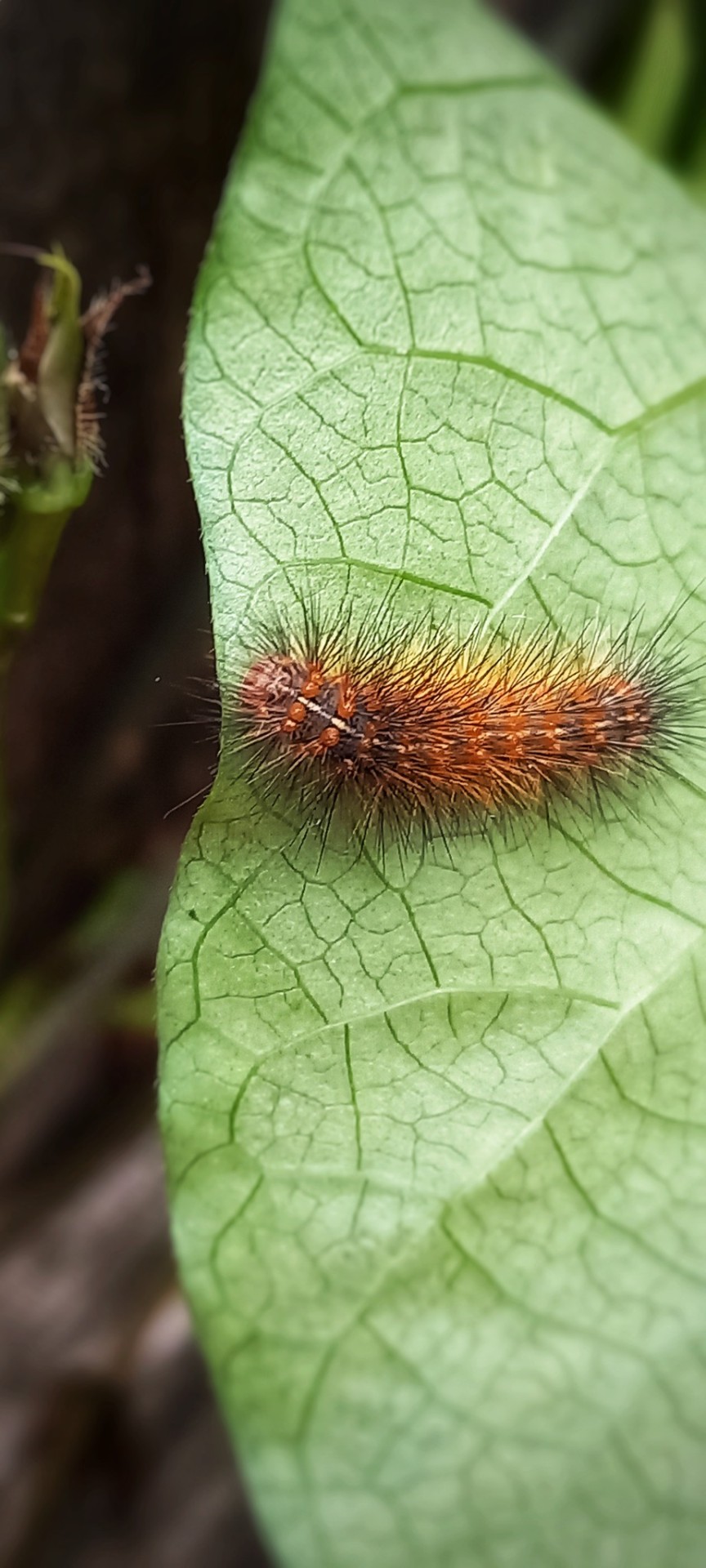
Lagarta
6 notes
·
View notes
Text
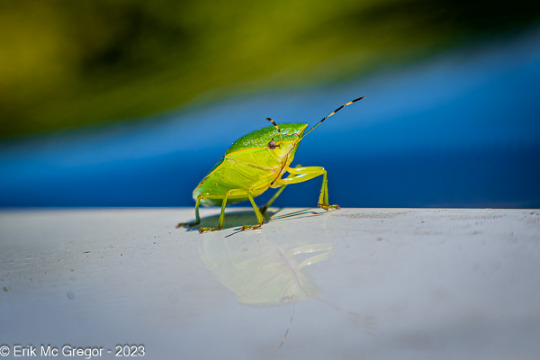
GREEN STINK BUG (chinavia hilaris) - Composition Monday
© Erik McGregor - [email protected] - 917-225-8963
#PhotoOfTheDay#GreenStinkBug#StinkBug#bug#ChinaviaHilaris#TinyNature#CreepyCrawlers#EyeLevel#insect#NYwildlife#nature#bugs#insects#wildlife#IntoTheTrees#forest#IntoTheWoods#WalkInTheWoods#woods#hiking#ButtermilkFalls#ButtermilkFallsPark#Blauvelt#NewYork#InsectPhotography#WildlifePhotography#NaturePhotography#macro#MacroPhotography#ShotOnCanon
0 notes
Photo

Bug of the Day
Quarantine Day 2467, or something like that ;-).
#green stink bug#Chinavia hilaris#Acrosternum hilare#Pentatomidae#Acrosternum#Chinavia#stink bug#bug#Hemiptera#insect
144 notes
·
View notes
Text





green stink bug, Chinavia hilaris, and nymphs
4 notes
·
View notes
Photo
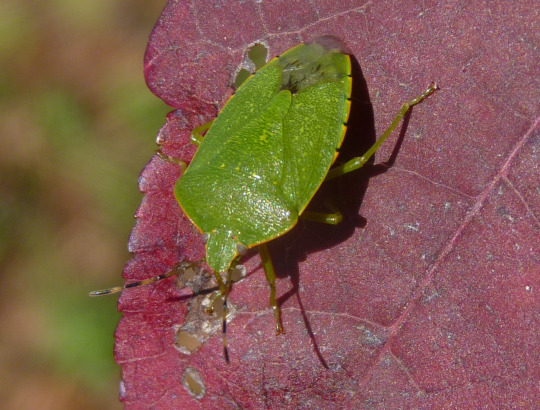
Green Stink Bug, Chinavia hilaris (by me)
#Green Stink Bug#Chinavia hilaris#Chinavia#Nezarini#Pentatominae#Pentatomidae#Pentatomoidea#Pentatomomorpha#Heteroptera#Hemiptera#Insecta#Hexapoda#Arthropoda#insects#true bug#stink bug#foliage#autumn#Monmouth Battlefield State Park#Monmouth County#New Jersey#mine
19 notes
·
View notes
Photo

Flavio qual é a espécie? Veja se identifiquei corretamente. #bug #greenstinkbug #percevejo #chinavia #chinaviahilaris #hemiptera #pentatomidae #hexapoda #soja #cidade
1 note
·
View note
